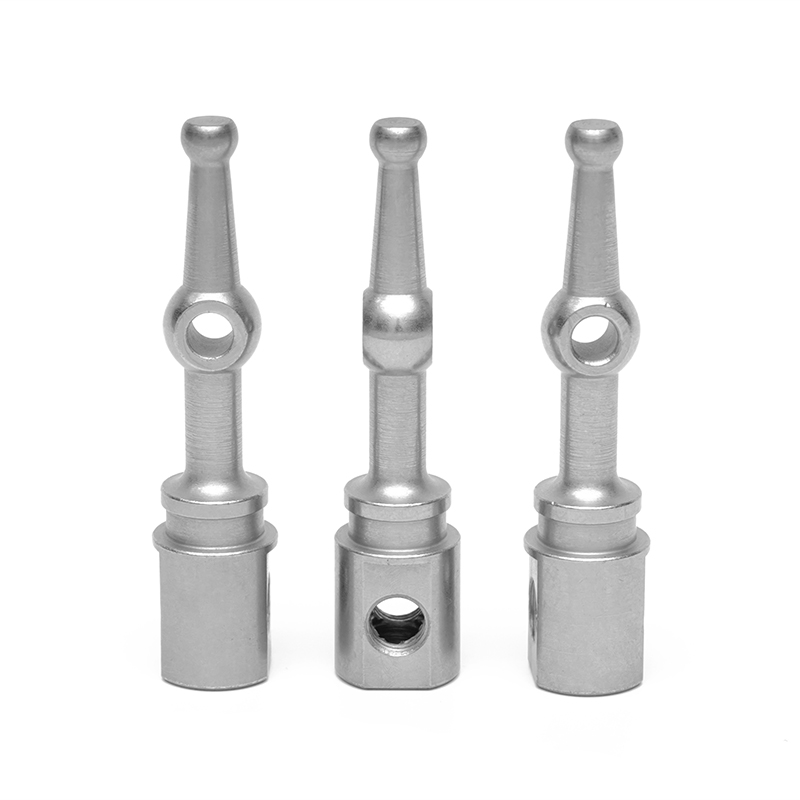In the intricate world of industrial machinery and automation, where precision, stability, and repeatability are non-negotiable, guide rail screws emerge as essential components that ensure seamless operation across a wide range of mechanical systems. These specialized fasteners, though often overlooked, play a pivotal role in securing and aligning linear guide rails — the backbone of CNC machines, robotic arms, 3D printers, and automated production lines.
Unlike standard screws used for general-purpose fastening, guide rail screws are engineered to meet exacting tolerances and performance demands. Their design, material composition, and installation methodology directly influence the structural integrity, load-bearing capacity, and operational accuracy of motion control systems. As industries continue their relentless pursuit of higher efficiency and tighter manufacturing tolerances, the importance of selecting and applying the right guide rail screw has never been greater.
Understanding the Function and Placement
At its core, a guide rail screw is designed to mount and secure linear guide rails to structural components such as machine bases, gantries, or moving carriages. These rails, in turn, support and guide the movement of sliders, bearings, or tool heads along a predefined axis. The reliability of this connection hinges on the performance of the screws that anchor the rail in place.
The primary functions of guide rail screws include:
Ensuring rigid and vibration-resistant attachment of the rail to the mounting surface.
Maintaining precise alignment under dynamic loads and high-speed operations.
Facilitating easy disassembly and reassembly during maintenance or rail replacement without compromising positional accuracy.
Due to these responsibilities, guide rail screws are strategically placed at regular intervals along the length of the rail, with spacing determined by factors such as rail type, load distribution, and expected operational forces.
Material Selection and Mechanical Properties
Material choice is a critical consideration in the selection of guide rail screws, as it must align with both the mechanical stresses encountered during operation and the environmental conditions in which the system functions.
Common materials include:
High-Strength Alloy Steel : Offers excellent tensile strength and fatigue resistance, making it suitable for heavy-duty applications.
Stainless Steel (A2/A4 Grades) : Provides superior corrosion resistance, ideal for environments exposed to moisture, chemicals, or salt spray.
Titanium Alloys : Used in aerospace and high-performance applications where weight reduction is crucial without sacrificing strength.
Heat-Treated Carbon Steel : Often employed in industrial settings for its durability and cost-effectiveness when paired with hardened rail surfaces.
Surface treatments such as zinc plating, phosphate coating, or black oxide may also be applied to enhance wear resistance and prevent galling during installation or removal.
Thread Design and Torque Specifications
Guide rail screws typically feature fine-pitch threads, which offer greater load-bearing capability and finer adjustment over coarse-threaded alternatives. This characteristic is particularly important in high-precision applications where even minor shifts can affect machining accuracy or positioning repeatability.
Additionally, many manufacturers specify torque values for tightening these screws to ensure optimal clamping force without overstressing the rail or the base material. Over-torquing can lead to thread stripping or rail deformation, while under-torquing may result in loosening due to vibration or thermal expansion.
To mitigate these risks, torque-controlled wrenches or screwdrivers are often recommended, especially in automated assembly environments where consistency is key.

Installation Techniques and Best Practices
Proper installation of guide rail screws is as crucial as the screws themselves. Inaccurate placement or improper torque application can compromise the entire linear motion system’s functionality. Key best practices include:
Pre-drilling and Tapping : Ensures accurate hole alignment and prevents cross-threading, especially when working with cast iron or aluminum bases.
Sequential Tightening : Screws should be tightened in a staggered or crisscross pattern to evenly distribute pressure along the rail length.
Use of Thread Lockers : In high-vibration environments, anaerobic adhesives can be applied to prevent unintended loosening.
Regular Inspection and Retorquing : Especially after initial operation cycles, as settling may occur and affect the rail-to-base contact.
Some advanced systems also integrate smart fastening solutions, including self-indicating screws or embedded sensors, to monitor preload and detect potential loosening in real time.
Applications Across Industrial Sectors
The use of guide rail screws spans a broad spectrum of industries where linear motion control is integral to operational success:
CNC Machining Centers : Secure guide rails that position cutting tools with micrometer-level precision.
Automotive Assembly Lines : Support robotic arms and conveyor systems requiring consistent and repeatable motion.
Semiconductor Manufacturing Equipment : Ensure ultra-precise positioning in cleanroom environments where contamination and misalignment are unacceptable.
Additive Manufacturing (3D Printing) : Stabilize print beds and extruder rails to maintain dimensional accuracy across layers.
Medical Imaging Devices : Enable smooth and stable movement of scanning platforms and diagnostic equipment.
Each of these applications demands a tailored approach to screw selection, taking into account factors such as operating temperature, exposure to contaminants, and required service life.
Innovations and Future Trends
As industrial automation continues to evolve toward Industry 4.0 and smart manufacturing, guide rail screws are undergoing transformation to meet new performance and data-integration demands. Emerging trends include:
Self-Locking Screws : Designed with integrated nylon inserts or deforming thread profiles to resist loosening without additional hardware.
Smart Fasteners : Equipped with micro-sensors to monitor tension, temperature, or wear levels and transmit data wirelessly for predictive maintenance.
Corrosion-Resistant Coatings : New nanocoatings and ceramic-based finishes offer extended protection without adding bulk.
Customized Head Designs : Engineered for specific tools or torque drivers to improve ergonomics and reduce installation errors.
These advancements reflect a broader shift toward intelligent, connected, and highly reliable mechanical systems — where even the smallest component plays a part in ensuring operational excellence.

 English
English 中文简体
中文简体 Español
Español русский
русский عربى
عربى








